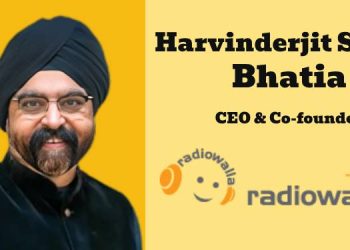According to PwC’s Global Entertainment & Media Outlook 2019–2023, the Indian entertainment and media industry is expected to reach INR 451,373 Cr by 2023, growing at a compound annual growth rate (CAGR) of 11.28% between 2018 and 2023.
Rajib Basu, Partner & Leader – Entertainment & Media, PwC India said, “India is the fastest growing entertainment and media market globally and is expected to keep that momentum. Our research shows that in the next 5 years India will see significant growth in OTT, online gaming and Internet advertising. Growth in these sub-sectors spurs from the growing trends around personalization and increased digitalization. Today’s consumer can now control their own media consumption through an expanding range of smart devices and curate their personal selection of channels using OTT services. Content is being pitched not at audiences of billions but separately at billions of individuals. The soon to arrive 5G networks will create further use cases, enhance user experiences and create disruptions leading to newer business opportunities. Long-term players in the Entertainment & Media space need to gear up to take advantage of such opportunities.”
Key highlights of the report:
OTT (Over-The-Top) Video: India’s OTT video market will grow at a 21.8% CAGR from INR 4464Cr in 2018 to INR 11976Cr in 2023. Subscription video on demand will increase at a 23.3% CAGR from INR 3756Cr in 2018 to INR 10708Cr in 2023. The potential of India’s enormous scale will become reality during the forecast period with its OTT video market overtaking that of South Korea to become the eighth-biggest market in the world by 2023.
Internet advertising: Total Internet advertising revenue for India in 2018 was INR 8150Cr, a 40.2% year-on-year increase from 2017. The Cricket World Cup and elections in 2019 are expected to boost advertising spends. Internet advertising is predicted to continue to grow rapidly in 2019 and beyond, and is forecast to be worth INR 18445Cr in 2023.
E-sports: India’s e-sports revenue is small at present but has strong potential with a calendar of well-supported events and leagues emerging. While outside sponsorship remains lower than global markets, this will see India’s e-sports sector increase at a 36.8% CAGR to the end of the forecast period. The main challenge for the segment has been poor online infrastructure, which has historically restricted growth. However, with improvements in infrastructure, this is expected to improve significantly in the near future.
Music & Podcasts: India’s music, radio and podcasts market was worth INR 5753Cr in 2018, up from INR 3890Cr in 2014. With streaming services finally germinating, total music revenue is forecast to hit INR 10858Cr in 2023, rising at a 13.5% CAGR.. At that pace, India would be the fastest-growing major economy on the planet. And with a population surging past 140Cr, it is forecast to surpass that of China in 2022.
Podcast listening has increased markedly in India in the past few years. Monthly listeners (defined as people who listened to at least one podcast in the last month) totalled 4Cr at the end of 2018, up a sharp 57.6% from 2.54Cr in the previous year. This made India the world’s third-largest podcast-listening market (after China and the US), although it ranks much lower on a per capita basis. Growth is set to continue over the forecast period with listener numbers set to increase at a 34.5% CAGR to 17.61Cr by 2023.
Four priorities shaping companies’ strategies
As E&M companies reinvent their organisations and offerings for an increasingly personalised world, four priorities are coming to the fore:
- One size does not fit all: As companies approach both markets of individuals and individual geographic markets, they are finding that it makes sense to present different options: all-you-can-eat offerings with unlimited usage in some areas, tiers of payments for different services in less developed markets, and competing on affordability. Meanwhile, across all markets — mature and developing — PwC’s research finds stark differences in terms of segment growth.
- The number of consumer touch points is expanding: As media and e-commerce experiences become more personal, gratification for consumers is becoming more instant and immediate. In response, content creators and distributors are devising new ways to appeal to consumers as individuals and marketers are figuring out how to meet consumers at the point of consumption and point them instantaneously towards purchase. Witness the rise of shoppable online advertising, often promoted by ‘influencers.’ Voice is also becoming a key form of interaction for both search and shopping, supported by the rise of smart speakers.
- Technological innovation introduces a new era of personalised computing: Companies are leveraging AI’s ability to understand people’s individual tastes and consumption habits to offer up the content individual users find most compelling. The combination of AI with 5G will be especially powerful, as it will fuel the rapid growth of segments such as video games and VR. The Outlook forecasts show video games’ compelling combination of growth and scale, while VR will be the fastest-growing segment overall.
- Trust and regulation remain pivotal, as personal data hygiene becomes key: With consumers moving to the centre of their own world of media experiences, their personal data — from the music they stream and the news they read to the products they buy — is taking a central role. In the emerging world, maintaining personal data hygiene is becoming key to the overall health of the E&M ecosystem. For companies, this goes beyond regulatory compliance, which is merely table stakes, and extends to building trust by behaving transparently and responsibly with customers’ data, ensuring the accuracy of news, and being sensitive to concerns around issues such as digital addiction.
Ennèl van Eeden, Global Entertainment and Media Leader and Partner, PwC Netherlands, comments:“The personalisation wave — fuelled by evolving customer behaviour — is set to be amplified by the forces of technology, scale, and aggressive investing and competition. The implications for organisations are profound. As the borders separating former media silos erode, companies need to think more broadly about the areas and segments in which they operate. At the same time, all E&M players must take the need to ‘know your customer’ more seriously, and marketers need to allocate their time and attention to new types of content and platforms — influencers, live events, ads inside apps and more. Finally, companies must focus intently on their core capabilities and geographical markets, while continually scanning the horizon for new developments and regulations, and being agile in responding to technological developments such as 5G. Put simply: it’s time to get personal with consumers — or be left out of the conversation.”

















